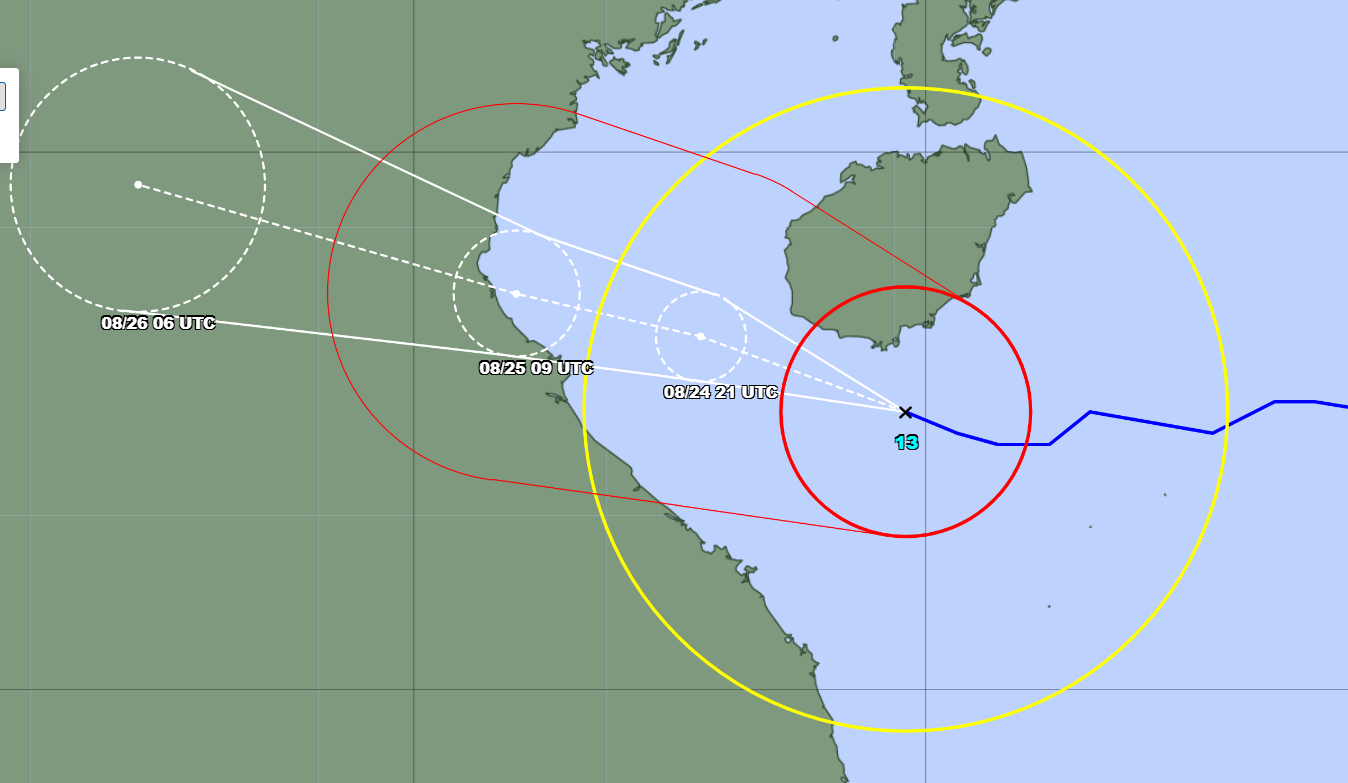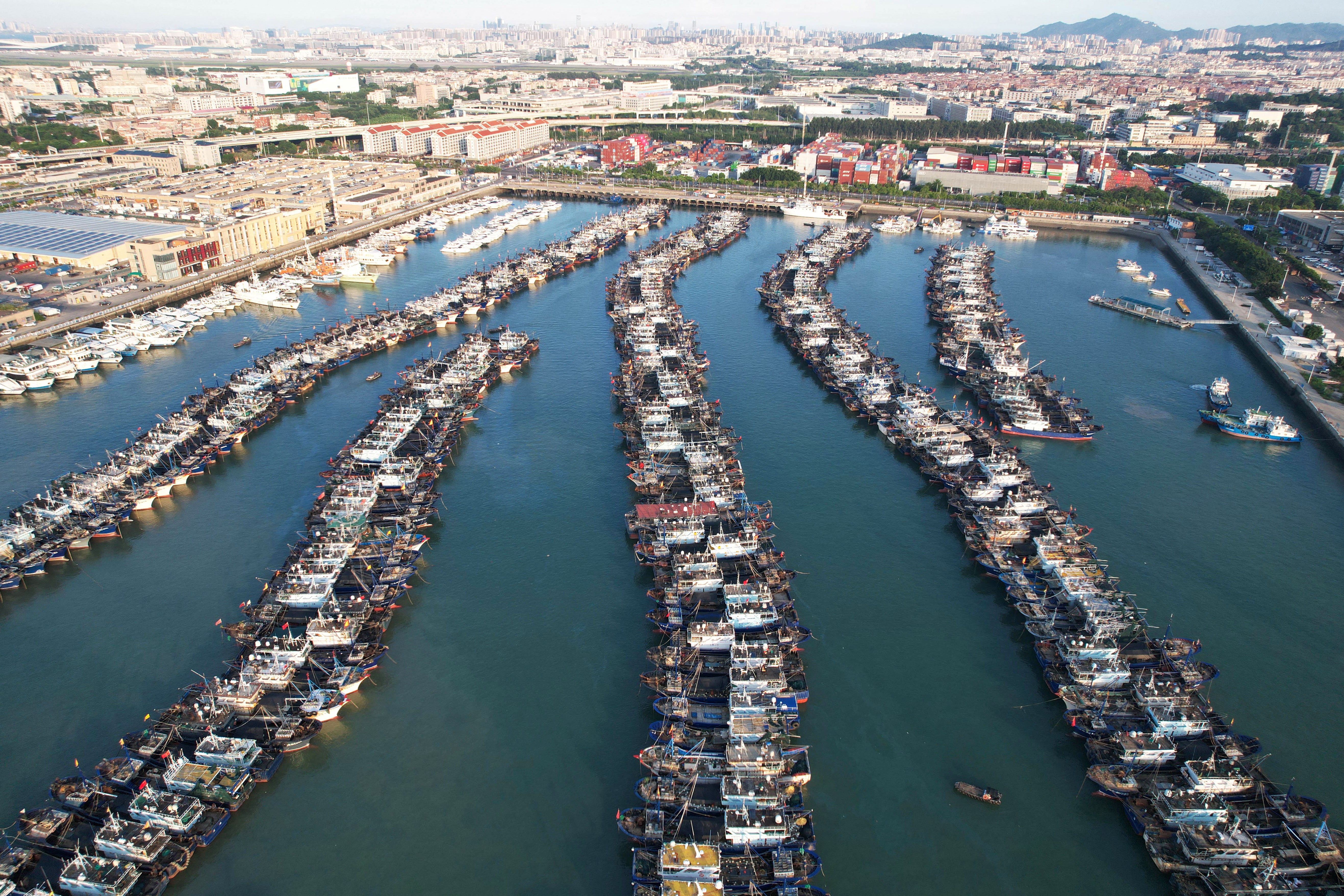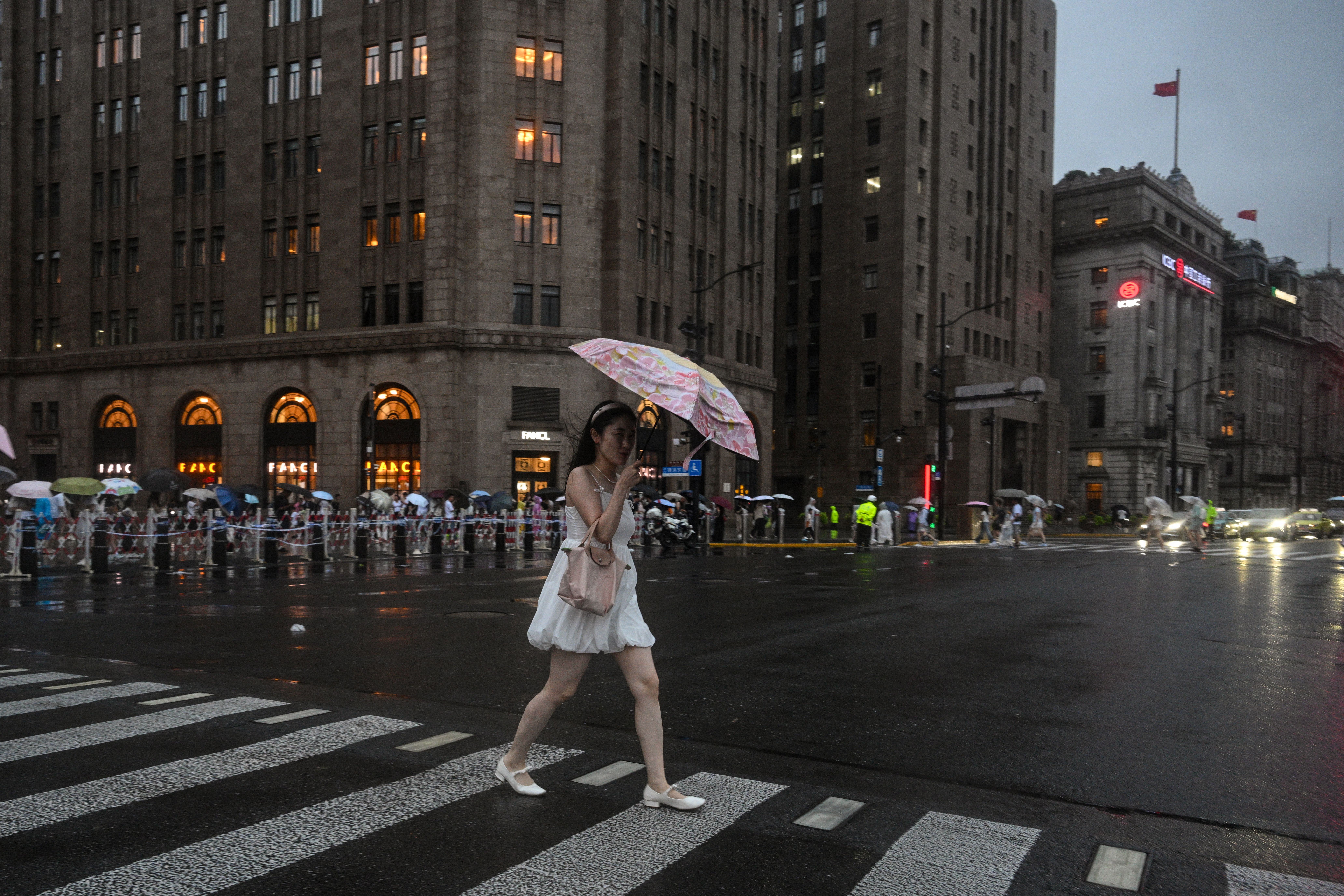Vietnam and China are evacuating hundreds of thousands of people, grounding flights and closing businesses as Typhoon Kajiki intensifies in the South China Sea.
At 6am GMT on Sunday the storm was around 500km off Vietnam’s central coast, moving west at about 20kmph with sustained winds of 149kmph. Forecasters in Beijing said Kajiki was expected to strengthen further, with winds potentially reaching 170kmph, before making landfall on Monday.
Authorities in Vietnam have prepared to move nearly 586,000 people from coastal provinces including Thanh Hoa, Quang Tri, Hue and Da Nang.
Seven provinces stretching from Ninh Binh to Quang Ngai have banned fishing vessels from leaving port, while almost 60,000 boats and 249,000 crew members have been warned of the danger. More than 49,000 vessels had already sought shelter, reported Vietnam Plus.
Flag carrier Vietnam Airlines cancelled 22 flights to and from central cities on Sunday and Monday, with budget airline Vietjet Aviation also suspending or delaying services.
Officials warned that Kajiki could threaten almost 300,000 hectares of rice, 77,000 hectares of fruit plantations and 57,000 hectares of rubber crops in north-central provinces. More than 5,700 fish cages and 384 coastal watch huts are also at risk of destruction, reported the outlet.

Reservoirs across the region are currently 71 to 82 per cent full, raising fears of flooding. Authorities have been ordered to lower water levels in large lakes to ease pressure on downstream areas.
Prime minister Pham Minh Chinh instructed provincial leaders, ministries and the military to ensure rapid evacuations, reinforce dykes and dams and maintain emergency communications. The ministry of foreign affairs has asked China and the Philippines to assist Vietnamese boats seeking safe harbour.
In China, the resort city of Sanya on Hainan Island shut shopping centres, restaurants and supermarkets on Sunday while suspending public transport, classes and construction. Local authorities issued a red typhoon alert – the highest level in the country’s four-tier system – and activated the most severe emergency response.

“Worst-case scenarios” should be expected, city officials said, stressing the need for vigilance to avoid fatalities, reported Reuters.
Kajiki was about 200km southeast of Sanya on Sunday morning, according to China’s National Meteorological Centre, moving northwest at roughly 20kmph with sustained winds of 38 metres per second near its centre. Forecasters said Hainan could receive up to 400mm of rainfall, with heavy downpours also expected in neighbouring Guangdong province and the Guangxi region.
The Guangxi Maritime Safety Administration dispatched patrol vessels to ensure all ships returned to port. Haikou, the provincial capital, closed three ports on Saturday evening. China’s State Flood Control and Drought Relief Headquarters also launched a Level IV emergency response and deployed a working group to Hainan to oversee disaster relief.
Thailand is also bracing for Kajiki’s impact. The Thai Meteorological Department forecast widespread heavy rainfall between 24 and 27 August, particularly in the northeast, reported ThE Nation. Officials warned of flash floods and landslides, with waves of more than three metres in the Andaman Sea and Gulf of Thailand. Small boats in those areas have been ordered to remain ashore.
In Vietnam, the National Centre for Hydro-Meteorological Forecasting said the storm could bring extremely rough seas, surges of up to 1.5m and sea levels above 3.5m in some coastal areas.
Strong winds of up to level 13 on the Vietnamese scale – equivalent to a severe typhoon – are expected across Thanh Hoa to Quang Tri, with gale-force winds also hitting northern provinces. Rainfall totals of 200 to 400mm are forecast, with some areas seeing more than 700mm, raising the threat of flash floods and landslides.

Kajiki is the fifth tropical storm to strike the East Sea – Vietnam’s name for the South China Sea – this year and the thirteenth typhoon to form in the wider region. The Vietnamese government compared its strength to Typhoon Yagi, which killed around 300 people and caused $3.3bn in damage less than a year ago.
Sanya, which welcomed 34 million tourist visits last year, is one of China’s most popular holiday destinations.
The storm comes as China reels from months of extreme rainfall linked by meteorologists to climate change. Natural disasters, including flooding and drought, caused ¥52.15bn (£5.6bn) in direct economic losses in July, killing or leaving missing 295 people, according to the ministry of emergency management.



